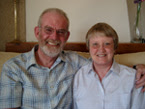Today, the main industry is tourism but the shops which generally sell local produce are tasteful rather than tacky.
One of the attractions of the city has to be the castle, originally built by the Iberians and then said to have been rebuilt by Rodrigo Díaz de Vivar, known as El Cid, who was in the service of the Muslim King, in the 11th century.
The castle has been of key importance featuring in every major conflict up to the Spanish Civil War in 1938.
Some of the streets appear to be made from the original stone.
The Convent of Saint Francis, El Convento de San Francisco, is gradually being restored and is due to become a Parador, a state hotel.
As you climb up to the top of the castle there are some terrific views.
Although the castle itself appears to be impossibly far away, the gradual circuitous path means you get to the top without too much exertion...
...with plenty of pauses along the way in order to take photographs of the town and countryside below.
The castle has been described as similar to a 3 layer cake with the 1st layer being formed from the Church and Cloister; the 2nd being the services of the castle such as the bakery, the soldiers' quarters and Arsenal with the highest level being the parade ground and the Officials' Hall.
The castle has been impregnable, not even an army of Orcs could get close!
One of the most important features of any Spanish town, the bullring, has to be within the town walls.
When you have reached the top you must take another photo to prove that you were there.
The local council is really missing out as there is not a shop at the top selling cold drinks and ice creams! They would make a fortune!
On the way down you can see even more photo opportunities.
There is even a "state-of-the-art" cannon from around 1885 on the 2nd layer.
Another great day out!

















No comments:
Post a Comment